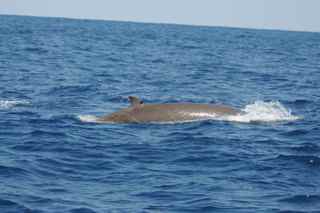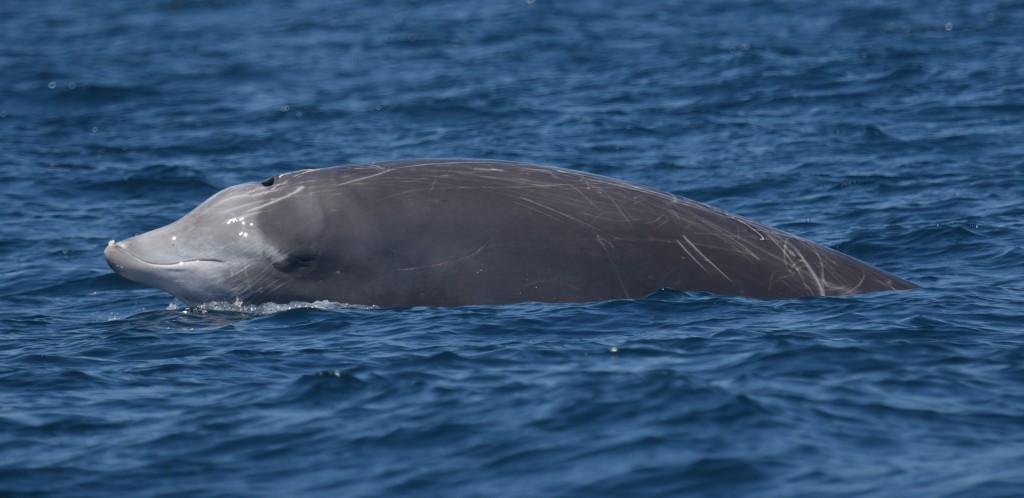This spring we are once again deploying satellite tags on whales and dolphins off Cape Hatteras with Daniel Webster from the Cascadia Research Collective. Yesterday (May 16th) was our first day of real work and we managed to deploy three satellite tags on short-finned pilot whales. Two of the tags will transmit locations only and the third tag will also send information about the whale’s diving behavior. We were able to obtain small biopsies of skin and superficial blubber that will allow us to determine the sex and reproductive status of the tagged whales.

In addition to the pilot whales, which were numerous offshore yesterday, we encountered bottlenose dolphins and a solitary Risso’s dolphin. Scalloped hammerhead sharks were common amongst the pilot whales, as they usually are, and we also saw a couple of large manta rays. And, finally, we also sighted small numbers of sooty and greater shearwaters and Wilson’s storm petrels.

This work involves very early mornings, and a long transit to and from Oregon Inlet to our study site 35 nautical miles from shore. We usually leave the dock at 6:00 AM and are at the shelf break by 8:30 or so, returning home before 6:00 PM, so that we can fuel up the R/V Richard T. Barber for the next day. So, very long days, but it is worth it for the amazing experience to be surrounded by pilot whales offshore.

Thanks to support from the U.S. Naval Facilities Engineering Command Atlantic for making this work happen.




